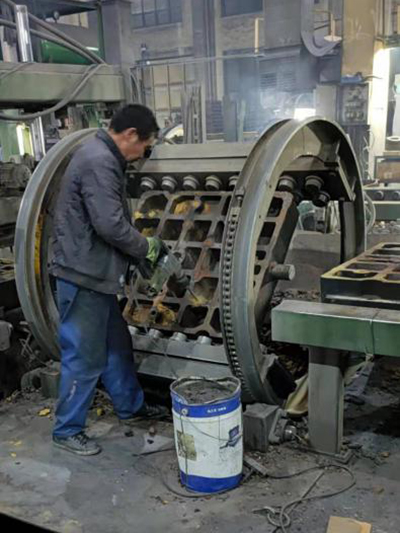The Density of Foundry Sand An Essential Property for Metal Casting
Foundry sand plays a crucial role in the metal casting industry, serving as a medium for creating molds for various metal products. One of the key properties that must be understood and carefully managed in the use of foundry sand is its density. This article explores what density is, why it matters in foundry applications, and how it can be measured and controlled.
Understanding Density
Density is defined as mass per unit volume, typically expressed in grams per cubic centimeter (g/cm³) or pounds per cubic foot (lb/ft³). In the context of foundry sand, density refers to how much mass of the sand fills a given volume. The density of foundry sand can significantly impact the quality and precision of casted parts, as it affects various factors such as mold strength, thermal conductivity, and permeability.
Importance of Density in Foundry Applications
1. Mold Strength and Stability The density of foundry sand is directly related to the mold's strength. A denser sand can provide better structural integrity, allowing it to withstand the pressure and heat exerted by molten metal. This is vital for maintaining the dimensional accuracy of the castings and preventing defects such as collapses or deformations.
2. Thermal Conductivity Sand density influences its thermal conductivity, which impacts how heat is transferred between the metal and the mold. Higher density sands typically exhibit better thermal conductivity, allowing for more uniform cooling of the cast metal. This uniformity helps prevent thermal stresses that can lead to cracking and other casting defects.
3. Permeability Permeability is the ability of a mold to allow gases to escape during the casting process. Denser sands can have lower permeability, which could lead to issues such as gas entrapment in the casting. Conversely, sands with optimal density can provide sufficient permeability to allow gases to escape while still maintaining mold integrity.
4. Casting Surface Finish The density of the sand impacts the surface finish of the final casting. A higher density sand typically leads to a smoother mold surface, which translates to a better surface finish on the casting. This is especially important in industries where cosmetic appearance matters, such as automotive and consumer goods manufacturing.
Measuring Density
density of foundry sand

The density of foundry sand can be measured using various methods
- Gravimetric Method This direct method involves weighing a known volume of sand to determine its density. This technique provides accurate results but may require specific equipment for precise volume measurement. - Displacement Method When sand is submerged in a liquid, the volume of liquid displaced can be measured. This method can yield density values for irregularly shaped or bulk samples.
- Pycnometer Method A pycnometer, a specialized device designed for measuring the density of granular materials, can provide high accuracy in density determination. By comparing the weight of the sample in air versus in a liquid, one can calculate the density.
Controlling Density in Production
To achieve the desired density, foundries often employ strategies such as
- Grain Size Optimization The size of the sand grains can significantly influence overall density. Finer grains pack more tightly, resulting in a higher density. - Moisture Control The moisture content of the sand mix can affect density. Consistent moisture levels help in achieving uniform packing and thus control the density of the mixture.
- Additives Some foundries use additives to adjust the properties of sand, affecting its density and providing improved mold characteristics.
Conclusion
Understanding and controlling the density of foundry sand is pivotal in metal casting processes. Its influence on mold strength, thermal properties, permeability, and surface finish makes it an essential factor that foundries must manage carefully. By employing proper measurement techniques and adjustments to the production process, foundries can ensure high-quality castings that meet the demands of various applications. In an industry where precision and quality are paramount, the role of density in foundry sand cannot be overstated.
Post time:des. . 17, 2024 16:28
Next:sand casting stainless steel
